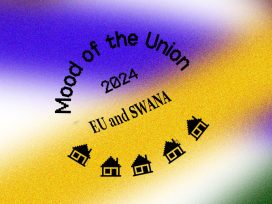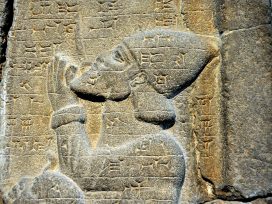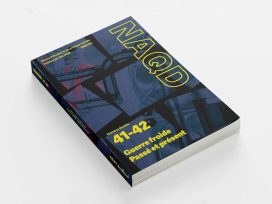Belgian journal La Revue nouvelle offers insights into the conflicts in Middle East. ‘Neutrality is neither possible nor desirable’, says the journal, but we can try to ‘better understand the context that produced these events’. In a dossier entitled ‘Moyen-Orient fragmenté’, contributors contest accepted wisdom and shed light on national and regional dynamics.
Elena Aoun considers what lies ahead for Lebanon. For much of the western world, she writes, Hezbollah is a ‘terrorist organization’ that has dragged the Lebanese people into a devastating conflict with Israel. This reading has guided the response of western governments to Israel’s ‘all-out war’ on Lebanon, the 2024 ceasefire and the redistribution of political power in the country. But what if it were wrong?
Aoun examines the structural factors that produced and shaped Hezbollah: Israel’s expulsion of Palestinians and attacks on southern Lebanon; the marginalization of the Shia communities; foreign interference, regional threats and the weakness of the Lebanese army and state.
Aoun compares Hezbollah’s ‘prudent’ response in the aftermath of 7 October with Israel’s aggression. Even before Israel launched its ‘all-out war’ in September 2024, it was responsible for 81 per cent of all strikes in the conflict, with ‘a lethality rate 23 times higher’ than Hezbollah’s. Yet the ceasefire agreement, which is supplemented by a text that gives Israel the ‘right to respond to threats’ coming from Lebanese territory and continue its overflights of the country, now appears as ‘a fool’s bargain that consolidates the American-Israeli military domination of the Middle East’.
Aoun’s outlook is pessimistic. Lebanon country must ‘overcome polarization and … paralysing crises to forge a social contract with all the components of a wounded and humiliated population’. Contrary to assumptions, this requires not the elimination of Hezbollah but solutions to the injustices that sustain it.

Iran at a crossroads
Since 7 October, the regional network supporting the Iranian regime has unravelled, and with it the legitimacy it once drew from its regional prestige, writes Jonathan Piron. Left without a buffer zone, the country now faces an aggressive United States and the likely return of Trump’s ‘maximum pressure’ strategy.
At home, ‘the economic and social context remains explosive’: inflation has soared and citizens ‘struggle to access basic goods and stable work’. Last winter, an ‘unusually intense energy crisis struck the whole country’, revealing deep-seated problems: ‘underinvestment in infrastructure, no energy alternative to gas, control of resources in the hands of parastate, corrupt institutions’. The population is taking to the streets, demanding reform. And with the 85-year-old Ayatollah’s health in doubt, a succession crisis looms. In this context, what options remain open to the regime?
Moderates are calling for diplomacy to restore relations with the United States and Europe. But ultraconservatives, ‘who have invested so much in the regional project, will want to avoid being seen to capitulate’ and instead try to exert Iran’s military power. They try to rebuild the ‘axis of resistance’ abroad, or ramp up ‘investment in conventional, ballistic or even nuclear weapons’.
Lawfare
Since 7 October, international law has been endlessly invoked by analysts, the media and protesters. Moreover, parties to the conflict and other government actors have sought to use it – albeit to different ends. This suggests that, despite reports to the contrary, international law is alive and well, writes Kheda Djanaralieva.
Both Israel and Iran have tried to legitimize their military actions through the right to self-defence enshrined in the United Nations Charter. Although it only applies when a state is the ‘object of an armed aggression attributable to another state’, Israel invokes the right to justify its assault on Gaza. Iran claims that its missile attack on Israel in October 2024 was in self-defence, particularly in response to the Israeli airstrike on the Iranian consulate in Damascus. Yet according to the UN Charter, states may ‘only use force to repel an aggression that is underway, not punish one that has come to an end’. Rather than submitting to international law, both Israel and Iran seek to ‘instrumentalize it to serve their own goals’.
Meanwhile, third parties are engaging in ‘lawfare’, i.e. using international law ‘to change the trajectory of ongoing hostilities without participating in them directly’. The ‘Israeli-Palestinian conflict has long been considered the closest thing the world has to a lawfare laboratory’, where ‘legal arguments replace bullets, and courts take the place of battlefields’.
Thus, in 2023, South Africa accused Israel of genocide at the International Court of Justice, which ordered Israel to change its tactics. And in 2024, the International Criminal Court issued arrest warrants for three members of Hamas, Benjamin Netanyahu and Yoav Gallant. It made these public, seemingly ‘to send a message’ and turn the warrants into ‘tools of dissuasion’. International law is being mobilized, Djanaralieva concludes – but ‘it remains to be seen if the parties to the conflict will heed it’.
Review by Cadenza Academic Translations







